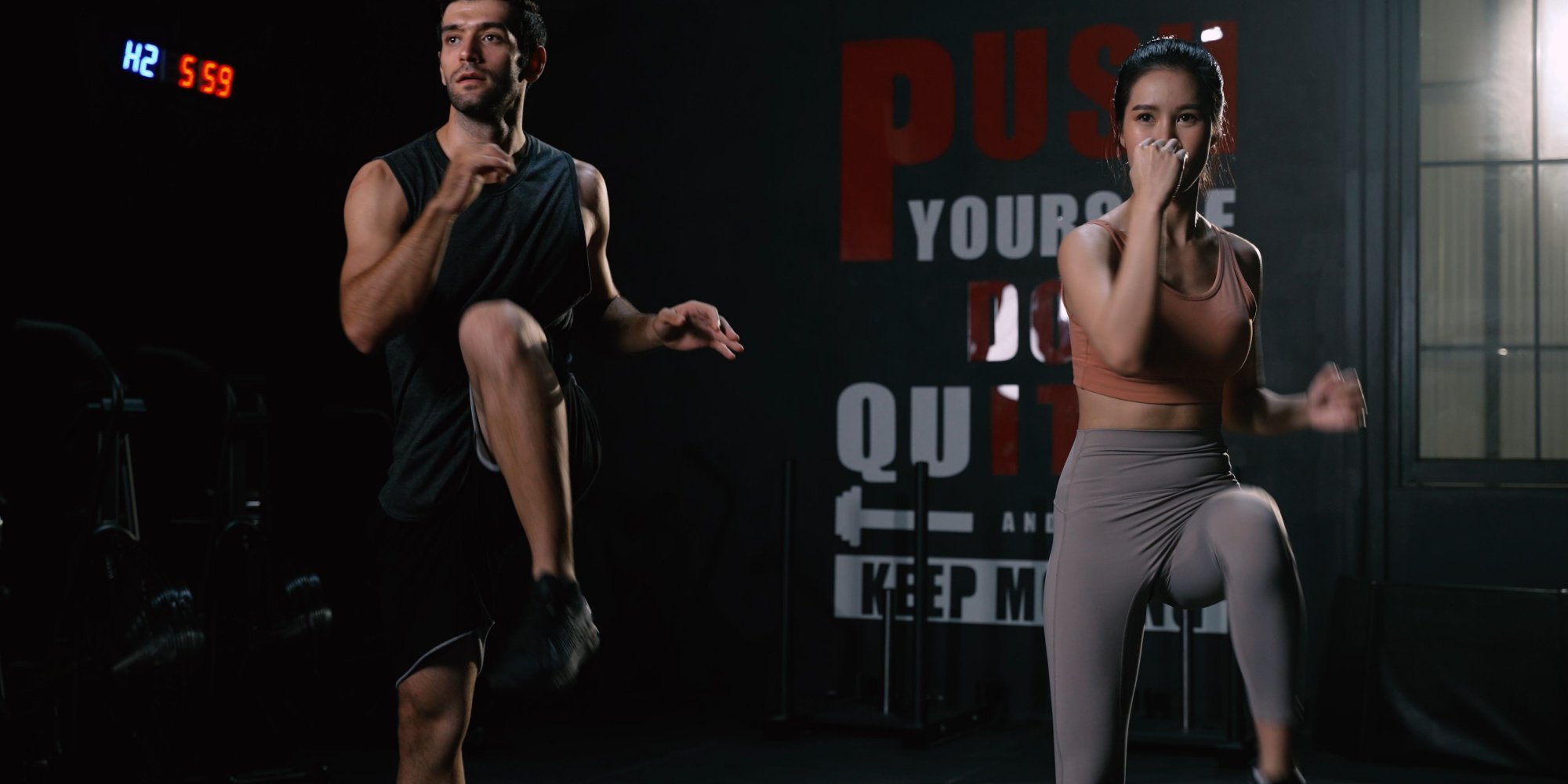HIIT has long been a main-stream source of fitness for years, and I can see why! It’s an intense form of cardio that gets you doing fun, high-intensity movements that make you feel like you’re working hard. Short-duration workouts are another contributing factor to its likability because you can get in a lot of work in 30 minutes or less; for someone who is short on time, what could be better?
Many people think HIIT training is just a trend that will be compared to Jazzercise and other long-forgotten workouts, but HIIT continues to be popular for the reasons mentioned above. But is it possible that HIIT could be negatively affecting your progress?
Absolutely! Here’s why:
HIIT is a great alternative to cardio because the high-intensity exercises initiate a better anaerobic response than steady-state cardio options. This is preferable because we ultimately want to maintain, or grow, more muscle for better overall health. So when it comes to trying to balance cardio and maintaining muscle, HIIT is highly recommended by some fitness professionals.
However, this is not the form of exercise I would recommend if you want to build muscle. Some HIIT exercises may use weights, but they’ll be super light. To really promote muscle protein synthesis, there needs to be enough stimulus for the muscle to be challenged. To do this, you typically need more weight than what is being used during a HIIT routine.
So if your main goal is to develop more muscle mass, which long-term promotes a more ideal bodyweight, doing HIIT routines will not help you reach your goal.
Another reason why HIIT may negatively impact your progress is that most people overdo it. I get it; it’s really easy to fall in love with that endorphin spike you get from HIIT workouts, and you therefore want to do it all the time. But the problem is, you’ll see a lot of people doing HIIT workouts more than 3 days a week, which is too much.
There is a lot of stress placed on the body during a HIIT routine, which means you need time to recover between workouts. I’m all for light to moderate resistance training, steady-state cardio (not often), or yoga/Pilates on off days, but you need to have at least one or two purely rest days as well. If you don’t allow your body to recover, you will not progress as well toward your goals because you are not allowing your muscles to repair.
Something else to consider is that if you are not properly programming your mesocycles, you will eventually plateau with your HIIT workouts. As with all forms of exercise, you shouldn’t be sticking with the same routines for months and months at a time; at some point, you’ll stop seeing progress with your goals because your muscles have adapted to that form of stimulus. Ideally, you should stay in a HIIT phase for no more than 8 to 12 weeks. After that, revert to more of a resistance training program to give your body a new challenge.
And finally, I can’t tell you how many times I’ve seen or heard someone get hurt during a HIIT workout. Because you are moving at a faster rate, there is a greater chance of performing the movement in bad form, especially if you haven’t received proper training on the exercise itself. With all injuries, you need to recover, which means more time away from the gym. HIIT workouts aren’t the kiss of death, but you should be somewhat experienced in working out, where you have a better foundation to handle more complex moves. You can also practice HIIT exercises at a slower rate to ensure form and mechanics are where they should be.
If HIIT is your main mode of exercise and you don’t seem to be seeing any progress with your goals, keep what was mentioned in mind, or try MAPS HIIT if you feel like you need more guidance with your workouts.





